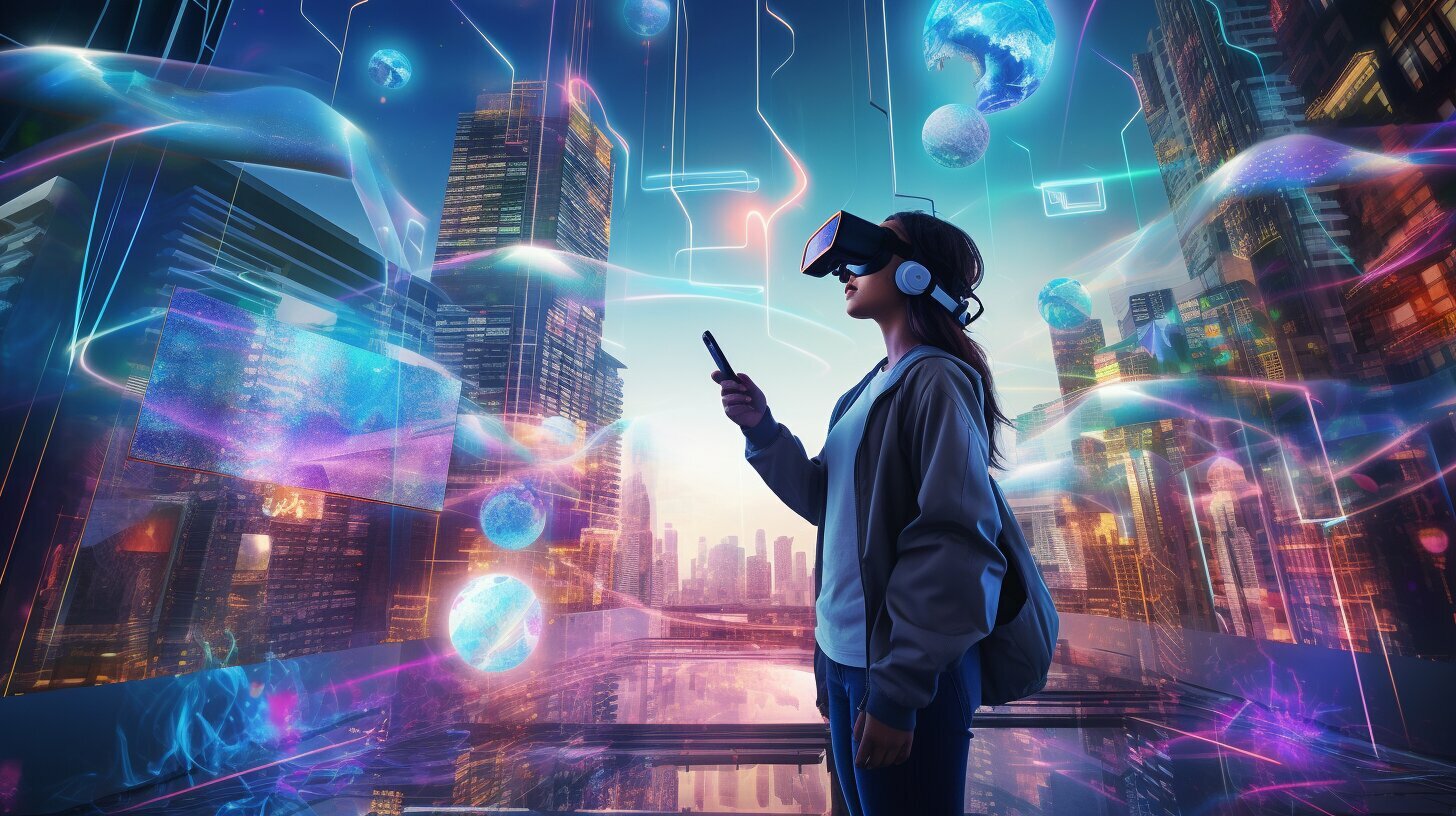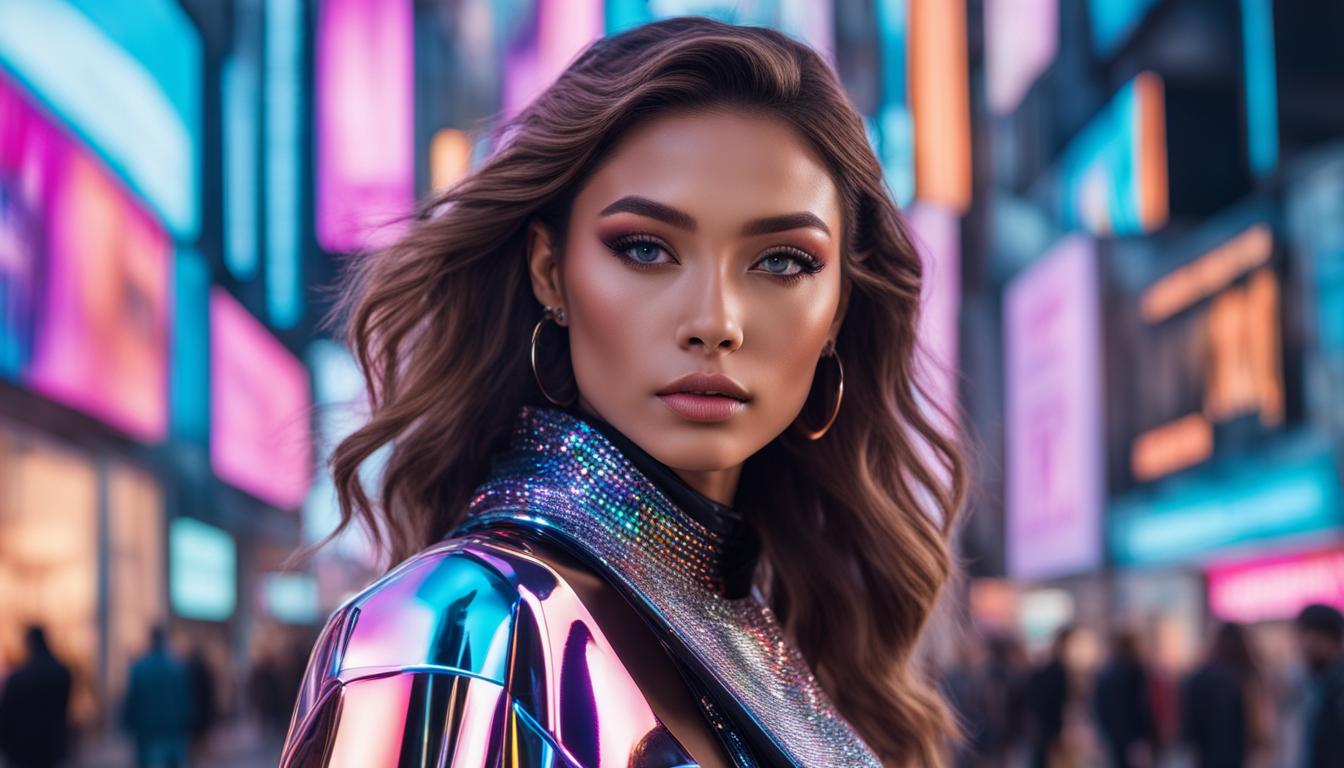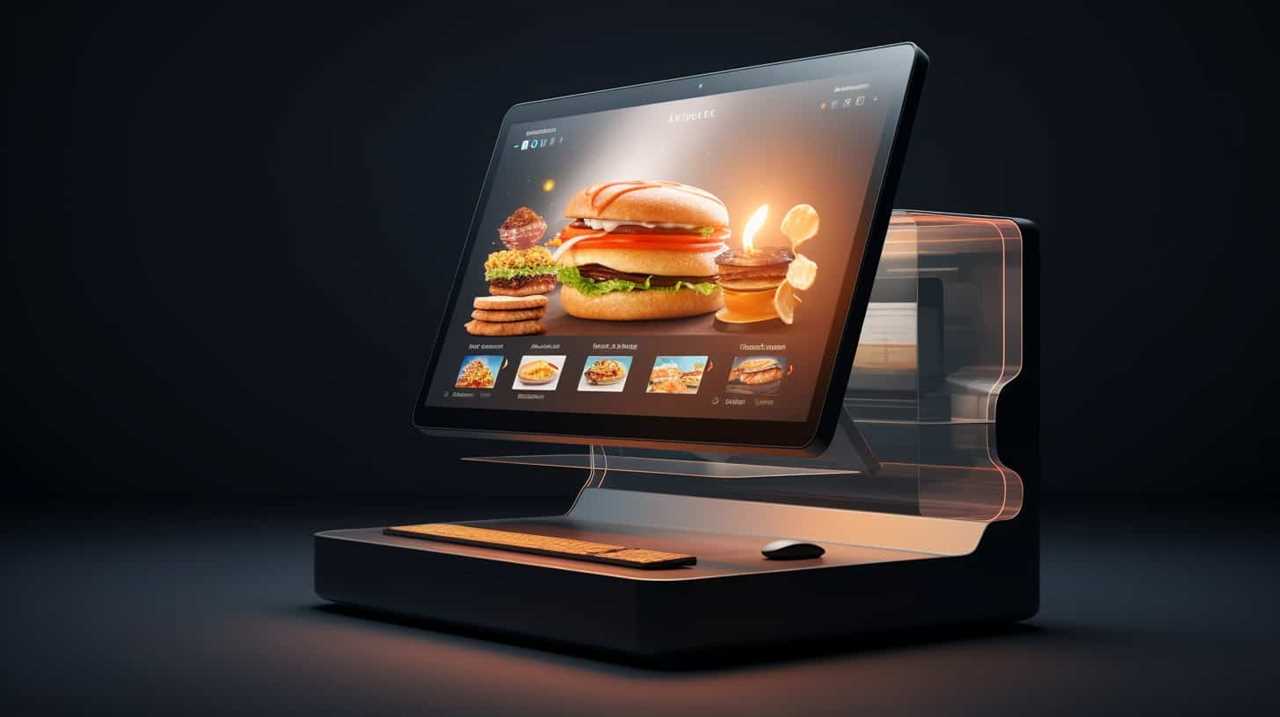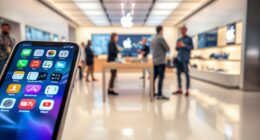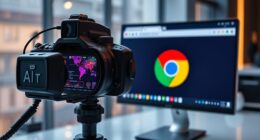Are you ready to uncover a new level of creative inspiration?
Let’s delve into the world of generative AI and discover how it can revolutionize your creative process.
With generative AI, we can tap into the limitless possibilities of technology, enhancing our artistic expression like never before.
From transforming traditional art forms to unleashing your own creative potential, generative AI opens doors to innovation and pushes the boundaries of what art can be.

Get ready to boost your artistic creativity with the power of generative AI.
Key Takeaways
- Generative AI in art allows artists to push the boundaries of their creativity and create artworks that were previously unimaginable.
- Ethical considerations arise regarding authorship, originality, and potential plagiarism when using generative AI in art.
- Generative AI applications in music enable artists to experiment with new sounds, melodies, and harmonies, but ethical concerns about the originality and authenticity of the generated content arise.
- Generative AI enhances artistic expression by opening up new possibilities and pushing the boundaries of traditional creativity.
Understanding Generative AI in Art
We will explore how generative AI in art allows us to tap into our artistic creativity and create unique and innovative artworks. Generative AI refers to the use of machine learning algorithms to generate new and original artistic content. It offers exciting possibilities for artists, enabling them to push the boundaries of their creativity and create artworks that were previously unimaginable.
However, it’s important to acknowledge the limitations of generative AI in art. While it can generate remarkable works, there’s still a lack of human touch and emotional depth in these creations. Additionally, ethical considerations arise when using generative AI for artistic purposes. Questions surrounding authorship, originality, and the potential for plagiarism need to be addressed.
Despite these limitations and ethical considerations, the potential of generative AI in art is vast and holds tremendous promise for the future of artistic innovation.

Exploring the Potential of Generative AI
Exploring the potential of generative AI opens up new avenues for artistic innovation and creativity.
Generative AI applications in music, for example, allow artists to experiment with new sounds, melodies, and harmonies, pushing the boundaries of traditional composition. By utilizing algorithms that can generate music based on predetermined rules and patterns, musicians can explore uncharted territories and discover unique combinations of notes and rhythms. This not only enhances their creative process but also provides them with a fresh perspective on their own work.
However, it’s important to consider the ethical implications of generative AI in art. While it offers exciting possibilities, there are concerns about the originality and authenticity of the generated content. Artists must navigate the fine line between using generative AI as a tool for inspiration and maintaining their own artistic integrity. Additionally, issues of copyright and ownership arise when using AI-generated content.
Striking a balance between innovation and ethical responsibility is crucial to ensure that generative AI remains a force for positive artistic exploration.

Enhancing Artistic Expression With Generative AI
Using generative AI enhances our artistic expression by opening up new possibilities and pushing the boundaries of traditional creativity. Harnessing machine learning for artistic innovation, we are able to tap into the immense potential of AI to create artwork that was previously unimaginable. Through the combination of algorithms and artistic input, generative AI enables us to explore uncharted territories, challenging the limits of our imagination. To illustrate the impact of generative AI on artistic expression, consider the following table:
| Traditional Creativity | Generative AI |
|---|---|
| Limited by human capacity and knowledge | Expands creative boundaries |
| Relies on personal experiences and skills | Incorporates vast datasets and algorithms |
| Requires time-consuming manual labor | Automates and accelerates creative processes |
| Subjective interpretation | Objective analysis and synthesis |
With generative AI, we can now push the boundaries of artistic imagination and achieve artistic innovation that was once thought to be impossible. By embracing this technology, we open the doors to a new era of artistic expression, where human creativity and machine intelligence converge to create truly extraordinary works of art.
Transforming Traditional Art With Generative AI
By harnessing the power of generative AI, we can revolutionize traditional art forms. Generative AI opens up a world of possibilities, transforming the way art is created and experienced. Here are three ways generative AI is reshaping traditional art:
- Exploring new mediums: Generative AI allows artists to push the boundaries of traditional art by creating digital artworks that blend multiple disciplines. It merges painting, sculpture, and even music, giving rise to entirely new art forms that were previously unimaginable.
- Preserving cultural heritage: Generative AI helps preserve traditional art techniques and styles that might otherwise be lost over time. By analyzing and replicating the works of past masters, generative AI ensures that their artistic legacy lives on for future generations to appreciate and learn from.
- Challenging artistic norms: Generative AI encourages artists to break free from conventional artistic practices and explore uncharted territories. It fosters experimentation, innovation, and the creation of art that challenges our perceptions and expands our understanding of what art can be.
As generative AI continues to shape the future of art, it also raises ethical questions. The ability to generate art automatically blurs the line between human creativity and machine-generated art. This prompts us to consider the authenticity, authorship, and originality of AI-generated artworks, and how they fit into the art world.

With the transformative power of generative AI, we can unleash our creative potential like never before. Let’s dive deeper into how this technology can empower artists and inspire new levels of artistic expression.
Unleashing Your Creative Potential With Generative AI
Our creative potential is unleashed with generative AI’s assistance. By harnessing algorithmic innovation for artistic breakthroughs, we can embrace the digital revolution in artistic exploration.
Generative AI opens up a world of possibilities, allowing us to push the boundaries of our creativity. It provides us with new tools and techniques to experiment with, enabling us to explore uncharted territories in our artistic endeavors.
With generative AI, we can generate unique and original ideas, compositions, and designs that were previously unimaginable. It acts as a collaborator, augmenting our creative process and sparking inspiration.

Frequently Asked Questions
Can Generative AI Completely Replace Human Artists in the Creation of Art?
Generative AI may enhance artistic innovation but cannot completely replace human artists. The role of human emotion in art creation is irreplaceable, as it adds depth, authenticity, and a unique perspective that AI cannot replicate.
Is Generative AI Limited to Creating Only Digital Artwork, or Can It Be Applied to Traditional Mediums as Well?
Generative AI expands artistic possibilities by merging traditional mediums with digital innovation. It offers advantages such as enhanced experimentation and efficiency, while also raising questions about the intersection of human creativity and AI.
Are There Any Ethical Concerns Surrounding the Use of Generative AI in Art?
There are ethical implications when using generative AI in art, particularly regarding the impact on artistic authenticity. We must consider the balance between human creativity and the influence of AI in order to maintain artistic integrity.
How Does Generative AI Handle Copyright Issues When Generating Artwork?
Generative AI presents potential challenges in determining ownership rights and copyright issues in artwork it generates. However, there are potential solutions such as implementing unique identifiers or licensing agreements to address these concerns.

What Are the Potential Risks and Drawbacks of Relying Too Heavily on Generative AI for Artistic Expression?
Relying too heavily on generative AI for artistic expression has potential limitations. It may limit artistic originality and hinder the development of unique ideas. It’s important to strike a balance between human creativity and AI assistance.
Conclusion
In conclusion, embracing the power of generative AI in art is like unlocking an infinite universe of creativity.
With its ability to explore new possibilities and push boundaries, generative AI has the potential to revolutionize the artistic landscape.
By merging traditional techniques with cutting-edge technology, artists can tap into a wellspring of inspiration and create masterpieces that surpass the limits of human imagination.

So, join us in this remarkable journey of artistic exploration, where the possibilities are as boundless as the stars in the sky.



